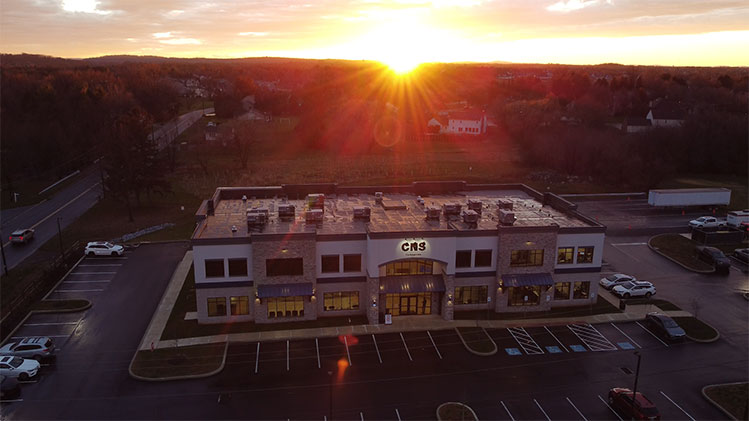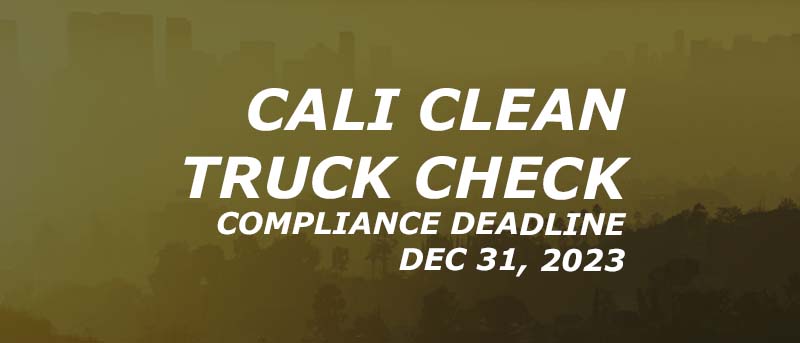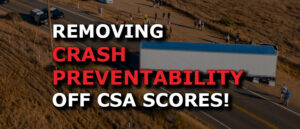Furry Friends Cause Trucking Border Delays At Canadian Border
To prevent reintroduction of rabies carried by dogs into the United States, new CDC regulations require proof of healthy pets at border crossing. Truckers who
We are a team of DOT Compliance and Licensing Professionals helping trucking and transportation companies remain safe, compliant, and profitable.
CNS or Compliance Navigation Specialists is DOT Compliance company that assists trucking and transportation companies remain DOT Compliant. We are part of a network of companies, CNS Companies, specializing in services related to the transportation, manufacturing, construction, service, education and medical industries.

A full-scale DOT Compliance Program managing a long haul carrier’s safety, compliance, licensing and more.
Learn more >>>
A DOT Compliance Program that keeps motor carriers compliant with the 6 Basic DOT Regulations required of all carriers.
Learn more >>>
Our Short-Haul/Construction Program is a full-scale program designed for private carriers that do not haul for-hire.
Learn more >>>
Our most comprehensive DOT Compliance Program, operating as your company’s off-site Safety Director or assisting your current safety personnel.
Learn more >>>
Our Non-CDL Program is a full-scale program managing safety, compliance, licensing and more for moving companies, couriers, landscapers, or any company subject to DOT regulations and does not employ CDL drivers.
Learn more >>>
Our DOT Audit Services cover a number of different types of DOT Audits that new and existing carriers will be subject to.
Our DOT Driver Services help trucking companies and carriers to stay compliant as they grow and hire more drivers.
Our DOT Vehicle Services focus on ensuring your vehicles are compliant with DOT Regulations, which is just as important as your drivers.
Our DOT Services for Special Carriers focus on companies outside of the typical motor carrier, like HAZMAT, Passenger and Bus Carriers.
CNS is part of a group of companies that offer other necessary services for the trucking and transportation industry, such as Commercial Trucking Insurance, CDL Training, Online Training Course, and even Healthcare.
Our DOT Licensing Services will cover you whether you are an existing company or just starting a trucking company. Our DOT Licensing Specialists can help you get up and running and in days with your DOT number, MC Authority, EIN, UCR, IFTA, 2290 HVUT, Fuel Taxes and can even set you up to get your Commercial Driver's License (CDL) with CNS Driver Training Center.
Our DOT Licensing Specialists will help you with every aspect of starting a trucking company. All you need to do is choose a name for your trucking company.
You will need to ensure your DOT Number, MC Authority, Vehicle Registration, etc. is all set up properly when you start your trucking business.
Our Licensing Specialists can help with all aspects of filing and renewing licenses, fuel taxes, etc.
CNS is part of a group of companies that offer other necessary services for the trucking and transportation industry, such as Commercial Trucking Insurance, CDL Training, Online Training Course, and even Healthcare.
To prevent reintroduction of rabies carried by dogs into the United States, new CDC regulations require proof of healthy pets at border crossing. Truckers who
CNS or Compliance Navigation Specialists is DOT Compliance company that assists trucking and transportation companies remain DOT Compliant. We are part of a network of companies, CNS Companies, specializing in services related to the transportation, manufacturing, construction, service, education and medical industries.
CNS Companies is a network of companies specializing in services related to the transportation, manufacturing, construction, service, education and medical industries. Our DOT Compliance division is handled by Compliance Navigation Specialists, CNS Insurance handles Commercial Truck Insurance, CDL training is managed by the CNS Driver Training Center and healthcare is managed by CNS Occupational Medicine.
We are a team of DOT Compliance and Licensing Professionals helping trucking and transportation companies remain safe, compliant, and profitable.
CNS or Compliance Navigation Specialists is DOT Compliance company that assists trucking and transportation companies remain DOT Compliant. We are part of a network of companies, CNS Companies, specializing in services related to the transportation, manufacturing, construction, service, education and medical industries.

A full-scale DOT Compliance Program managing a long haul carrier’s safety, compliance, licensing and more.
Learn more >>>
A DOT Compliance Program that keeps motor carriers compliant with the 6 Basic DOT Regulations required of all carriers.
Learn more >>>
Our Short-Haul/Construction Program is a full-scale program designed for private carriers that do not haul for-hire.
Learn more >>>
Our most comprehensive DOT Compliance Program, operating as your company’s off-site Safety Director or assisting your current safety personnel.
Learn more >>>
Our Non-CDL Program is a full-scale program managing safety, compliance, licensing and more for moving companies, couriers, landscapers, or any company subject to DOT regulations and does not employ CDL drivers.
Learn more >>>
Our DOT Audit Services cover a number of different types of DOT Audits that new and existing carriers will be subject to.
Our DOT Driver Services help trucking companies and carriers to stay compliant as they grow and hire more drivers.
Our DOT Vehicle Services focus on ensuring your vehicles are compliant with DOT Regulations, which is just as important as your drivers.
Our DOT Services for Special Carriers focus on companies outside of the typical motor carrier, like HAZMAT, Passenger and Bus Carriers.
CNS is part of a group of companies that offer other necessary services for the trucking and transportation industry, such as Commercial Trucking Insurance, CDL Training, Online Training Course, and even Healthcare.
Our DOT Licensing Services will cover you whether you are an existing company or just starting a trucking company. Our DOT Licensing Specialists can help you get up and running and in days with your DOT number, MC Authority, EIN, UCR, IFTA, 2290 HVUT, Fuel Taxes and can even set you up to get your Commercial Driver's License (CDL) with CNS Driver Training Center.
Our DOT Licensing Specialists will help you with every aspect of starting a trucking company. All you need to do is choose a name for your trucking company.
You will need to ensure your DOT Number, MC Authority, Vehicle Registration, etc. is all set up properly when you start your trucking business.
Our Licensing Specialists can help with all aspects of filing and renewing licenses, fuel taxes, etc.
CNS is part of a group of companies that offer other necessary services for the trucking and transportation industry, such as Commercial Trucking Insurance, CDL Training, Online Training Course, and even Healthcare.
To prevent reintroduction of rabies carried by dogs into the United States, new CDC regulations require proof of healthy pets at border crossing. Truckers who
CNS or Compliance Navigation Specialists is DOT Compliance company that assists trucking and transportation companies remain DOT Compliant. We are part of a network of companies, CNS Companies, specializing in services related to the transportation, manufacturing, construction, service, education and medical industries.
CNS Companies is a network of companies specializing in services related to the transportation, manufacturing, construction, service, education and medical industries. Our DOT Compliance division is handled by Compliance Navigation Specialists, CNS Insurance handles Commercial Truck Insurance, CDL training is managed by the CNS Driver Training Center and healthcare is managed by CNS Occupational Medicine.

The Heavy-Duty Inspection and Maintenance (HD I/M) regulation is a new program starting in 2023 to ensure polluting, poorly maintained heavy-duty vehicles operating in California are quickly identified and repaired.
CARB is at it again.
The California Air Resources Board (CARB) is trying to reduce the health effects caused by heavy-duty diesel vehicles greater than 14,000 pounds that contribute most of the on-road NOx and PM 2.5 emissions in the state.
To ensure that vehicles’ emissions control systems are properly functioning when traveling on California’s roadways, CARB approved the Clean Truck Check program that combines periodic vehicle testing requirements with other emissions monitoring techniques and expanded enforcement strategies to identify vehicles in need of emissions related repairs and ensure any needed repairs are performed.
Previous efforts include regulations and programs for new engine standards, manufacturer warranties, and durability requirements for emission control components; in-use truck rules to accelerate fleet turnover; and incentive programs to promote innovative low- and zero-emitting technologies.
Let’s look at what the Clean Truck Check program requirements are and the upcoming deadline for compliance.
Simply, the state is implementing a heavy duty vehicle inspection and maintenance program.
While modern heavy-duty diesel vehicles are equipped with aftertreatment systems (like diesel particulate filters for controlling PM and selective catalytic reduction) for cutting NOx emissions, if these components malfunction, this may result in emissions increases that can stall efforts to achieve clean, healthy air in California’s communities.
The Clean Truck Check will ensure heavy-duty vehicles operating in California are:
They will do this through an integrated strategy combining:
When fully implemented, the regulation is projected to cut statewide NOx emissions by over 81 tons per day and PM emissions by 0.7 tons per day in 2037. Together, these emissions reductions will result in over 7,500 avoided premature deaths.
Nearly all diesel and alternative fuel heavy-duty trucks and buses with a power unit only vehicle weight rating over 14,000 pounds that operate in California must comply.
This includes hybrid trucks and buses, commercial vehicles, privately-owned vehicles, government vehicles, and vehicles registered outside of California.
However, there are several vehicles that are exempt from the regulation:
The program began in January 2023 with the use of roadside emissions monitoring devices (REMD) to screen for vehicles that may have high emissions.
Vehicles flagged as potential high emitters may be required to undergo follow-up vehicle compliance testing to ensure they are operating with properly functioning emissions control systems.
If your vehicle is identified as a potential high emitter through REMD, you will receive a Notice to Submit to Testing (NST) from CARB. Upon receival, you will have 30 calendar days to submit to CARB a passing HD I/M compliance test performed by a HD I/M tester.
CARB published a list of HD I/M testers with contact information that offer for-hire testing services, which may include mobile services, on CARB’s HD I/M webpage at: https://ww2.arb.ca.gov/our-work/programs/heavy-duty-inspection-andmaintenance-program.
Be sure to follow the instructions in the letter you receive from CARB and don’t wait until the last day to get your vehicle tested and submit test results to CARB.
Once CARB determines your vehicle is compliant, there is nothing more you will need to do in response to the NST.
By January 31, 2024, vehicle owners are required to:
Once $30 annual fee is paid, the system will alert you when the periodic testing is due.
Beginning in 2025, the fee must be paid annually by the registration expiration date for CA DMV.
The HD I/M database will incorporate vehicle data from existing CARB databases and from DMV data. Many vehicle owners only will need to check that the vehicle data is correct, while others may need to input the data manually.
Also, ONLY vehicles with 2010 or newer engines are permitted to register – pre-2010 vehicles are not permitted to travel in California.
If a business adds or removes a vehicle from their fleet after creating an account, vehicle owners must update vehicle information within 30 calendar days of a transaction to add or remove a vehicle.
Once enforcement begins, vehicle owners that don’t comply with these requirements may be cited for non-compliance and/or have their DMV vehicle registrations blocked.
Out of state vehicles must follow the deadline below based on the last number of the VIN
| Last Number of VIN | 0 | 1 | 2 | 3 | 4 | 5 | 6 | 7 | 8 | 9 |
| 2024 Compliance Deadline Month | Oct | Nov | Dec | July | Aug | Sept | Oct | Nov | Dec | July |
To note, this is separate from the CARB TRUCRS requirements.
Starting in 2024, CARB staff should start periodic testing for vehicles on their first compliance deadline on or after July 1, 2024.
To be deemed compliant with Clean Truck Check, a passing compliance test from an applicable vehicle must be submitted to CARB within the 90 days before a vehicle’s compliance deadline.
For example, if a vehicle’s periodic compliance deadline in 2024 is November 30, a passing compliance test would need to be submitted to CARB’s Clean Truck Check database system between September 1, 2024, and November 30, 2024.
The vehicle’s 2024 annual compliance fee also would be due by the compliance deadline.
The Clean Truck Check database system will provide vehicle owners and fleet managers access to the schedule of their vehicles’ upcoming periodic compliance testing deadlines and compliance fee payments.
Freight contractors and brokers must verify that heavy-duty vehicles they contract with for services are in compliance with the HD I/M regulation.
This also includes public agencies that contract for heavy-duty truck services.
Additionally, seaport and railyard facilities must verify compliance with the HD I/M regulation for vehicles that enter their facilities.
If you have further questions, please email CARB staff at hdim@arb.ca.gov. They generally respond within three to five business days.

To prevent reintroduction of rabies carried by dogs into the United States, new CDC regulations require proof of healthy pets at border crossing. Truckers who

This means future regulations will “become clearer” or “stuck in the courts” for years. On June 28, 2024, the U.S. Supreme Court overturned the Chevron

ATRI’s Research Advisory Committee (RAC) selected a diverse set of research priorities designed to address some of the industry’s most critical issues including workforce development,

CNS can help with our Roadside & Incident Report Management service where a team of DOT Compliance Specialists will assess the Department of Transportation safety records
Our DOT Compliance Programs ensure it is your top priority and keeps your business running.
Receive the latest transportation and trucking industry information about FMCSA and DOT Audits, Regulations, etc.

To prevent reintroduction of rabies carried by dogs into the United States, new CDC regulations require proof of healthy pets at border crossing. Truckers who

This means future regulations will “become clearer” or “stuck in the courts” for years. On June 28, 2024, the U.S. Supreme Court overturned the Chevron

ATRI’s Research Advisory Committee (RAC) selected a diverse set of research priorities designed to address some of the industry’s most critical issues including workforce development,
Join our monthly newsletter and stay up-to-date on trucking industry news and receive important compliance and licensing tips.
Join our monthly newsletter and stay up-to-date on trucking industry news and receive important compliance and licensing tips.